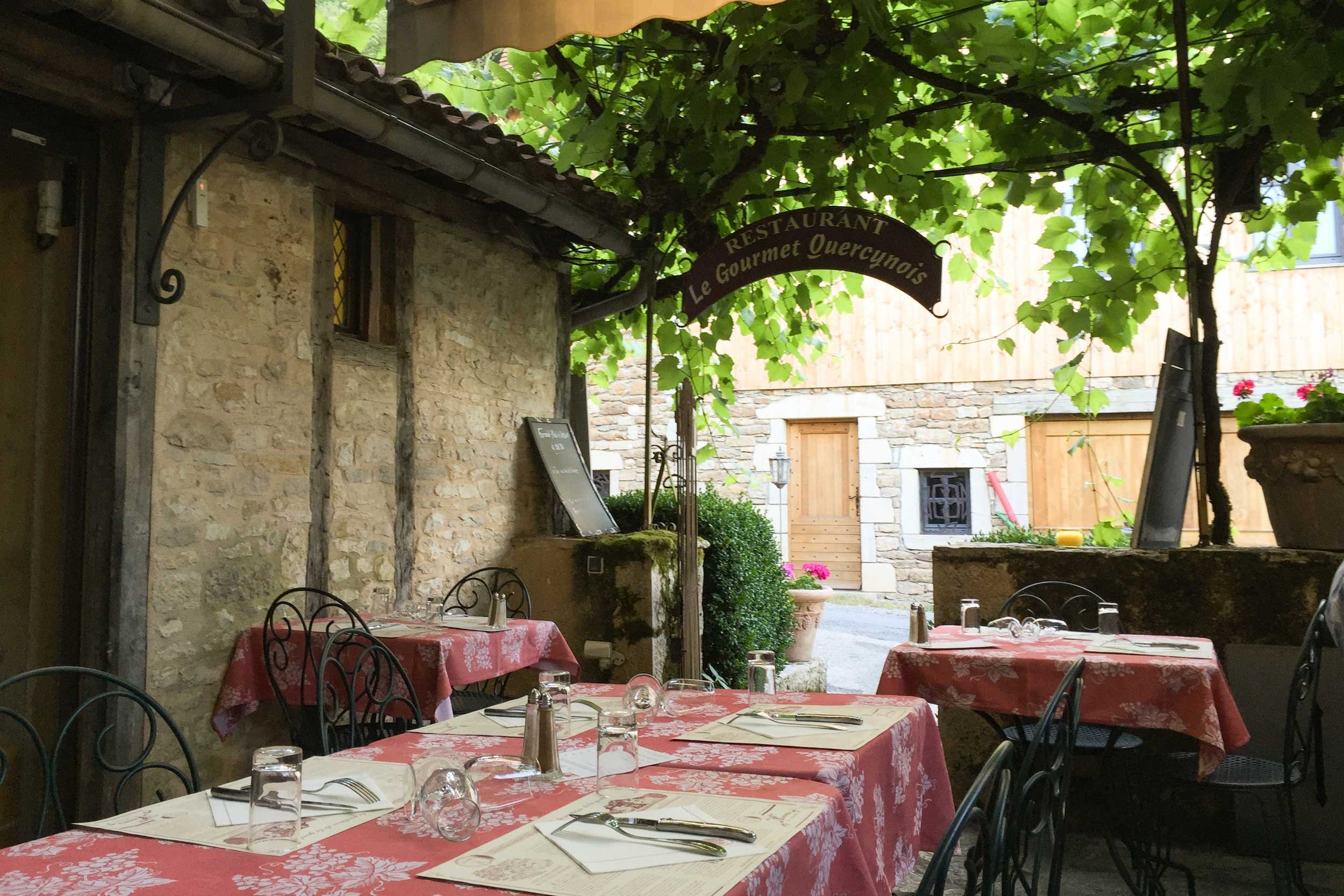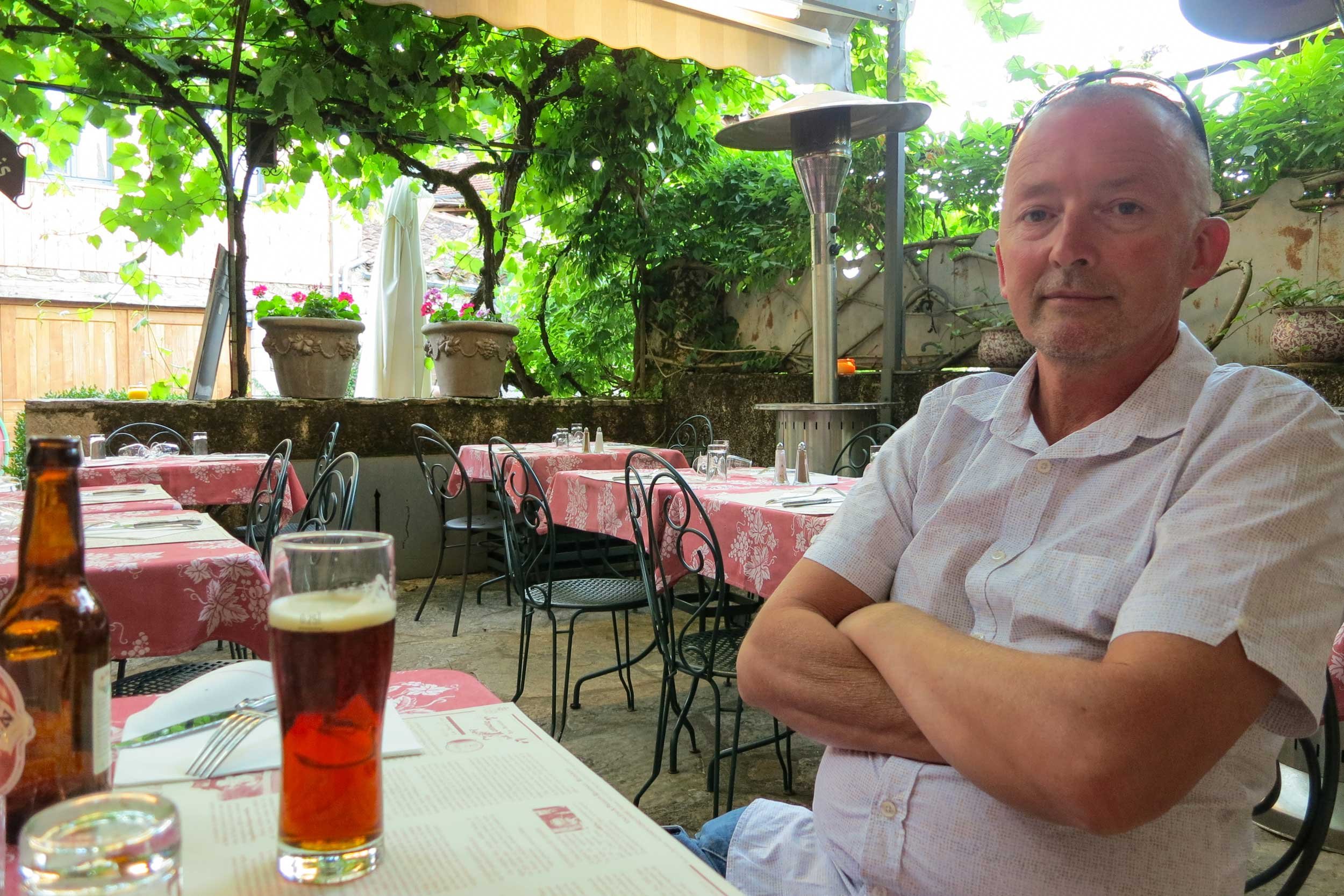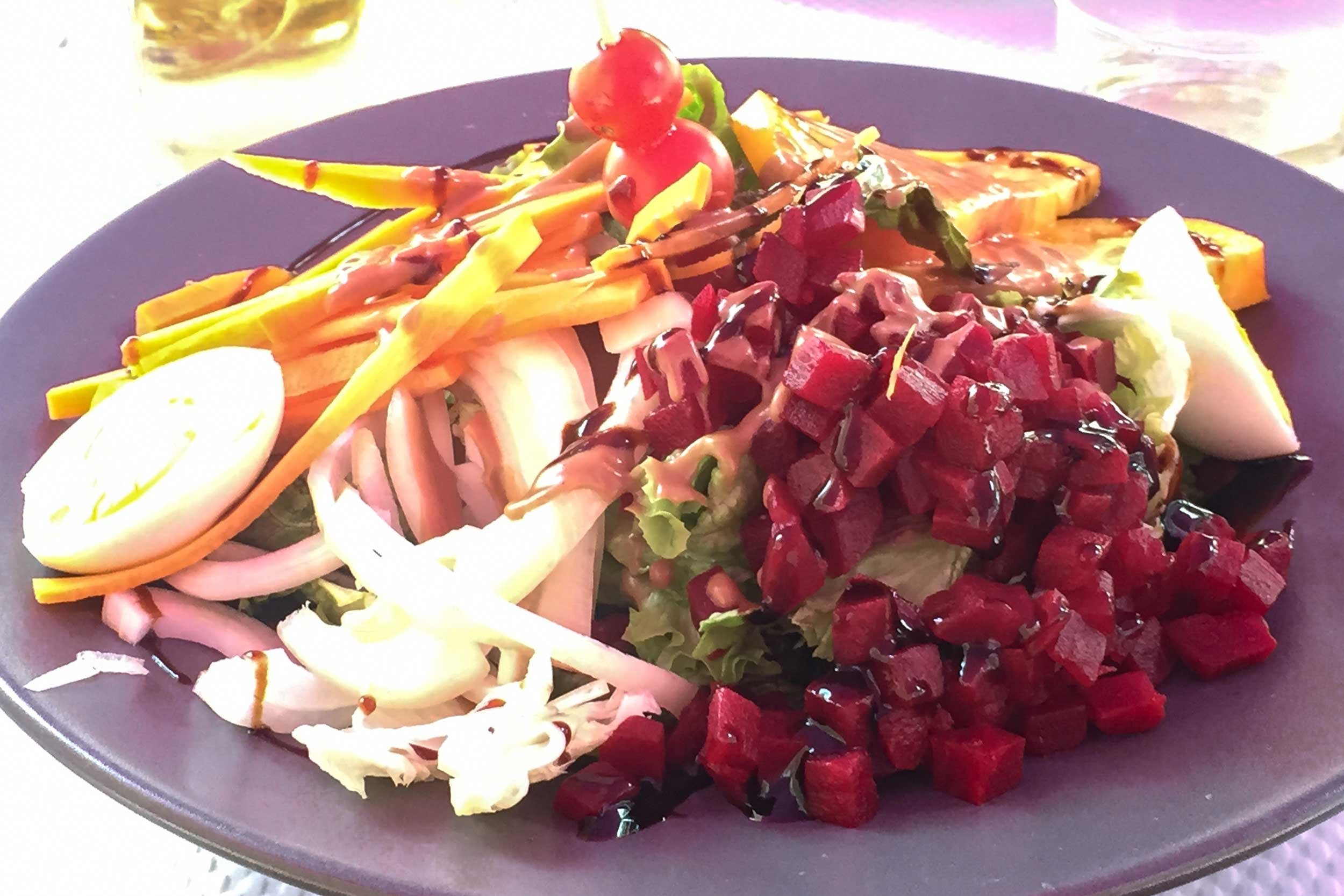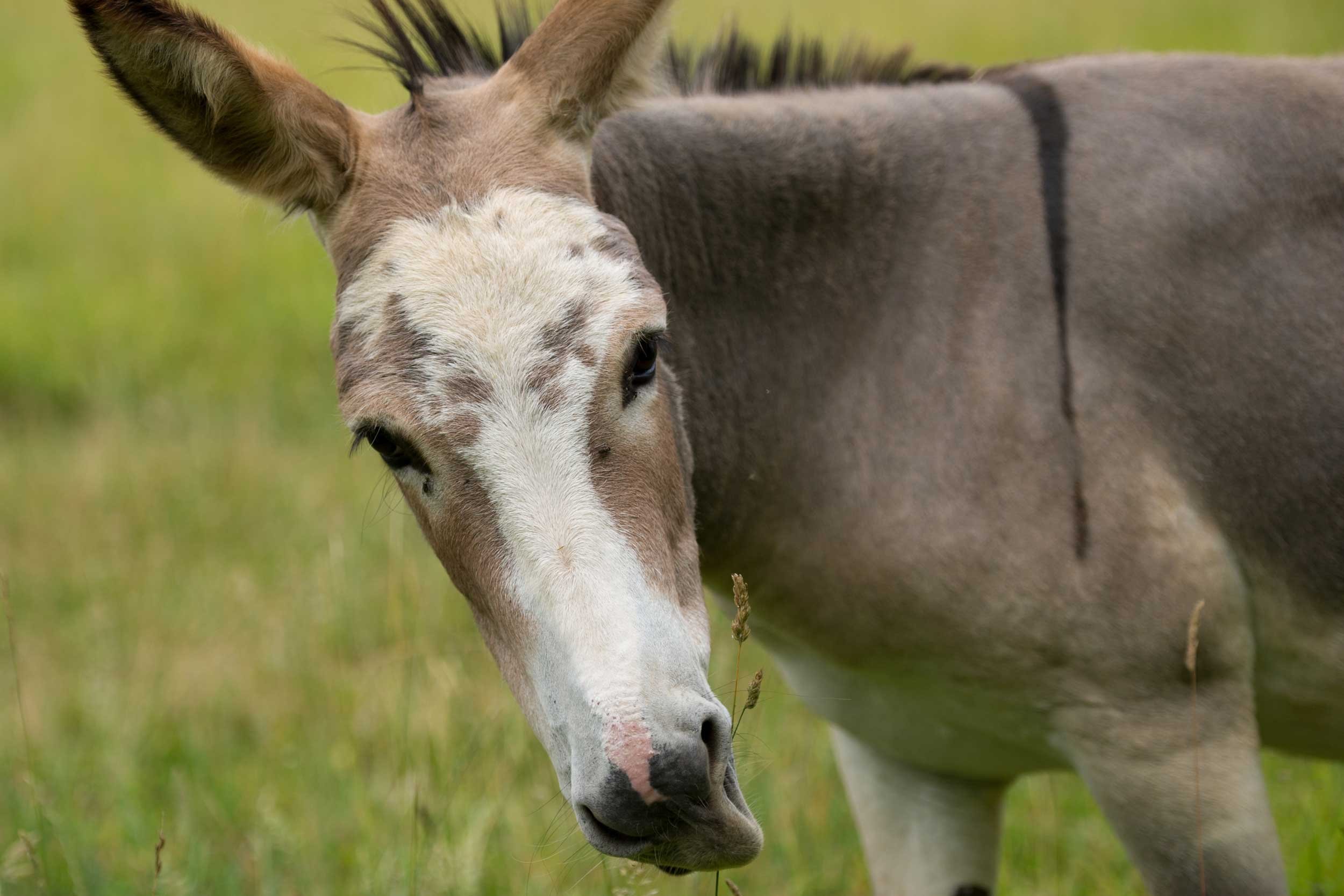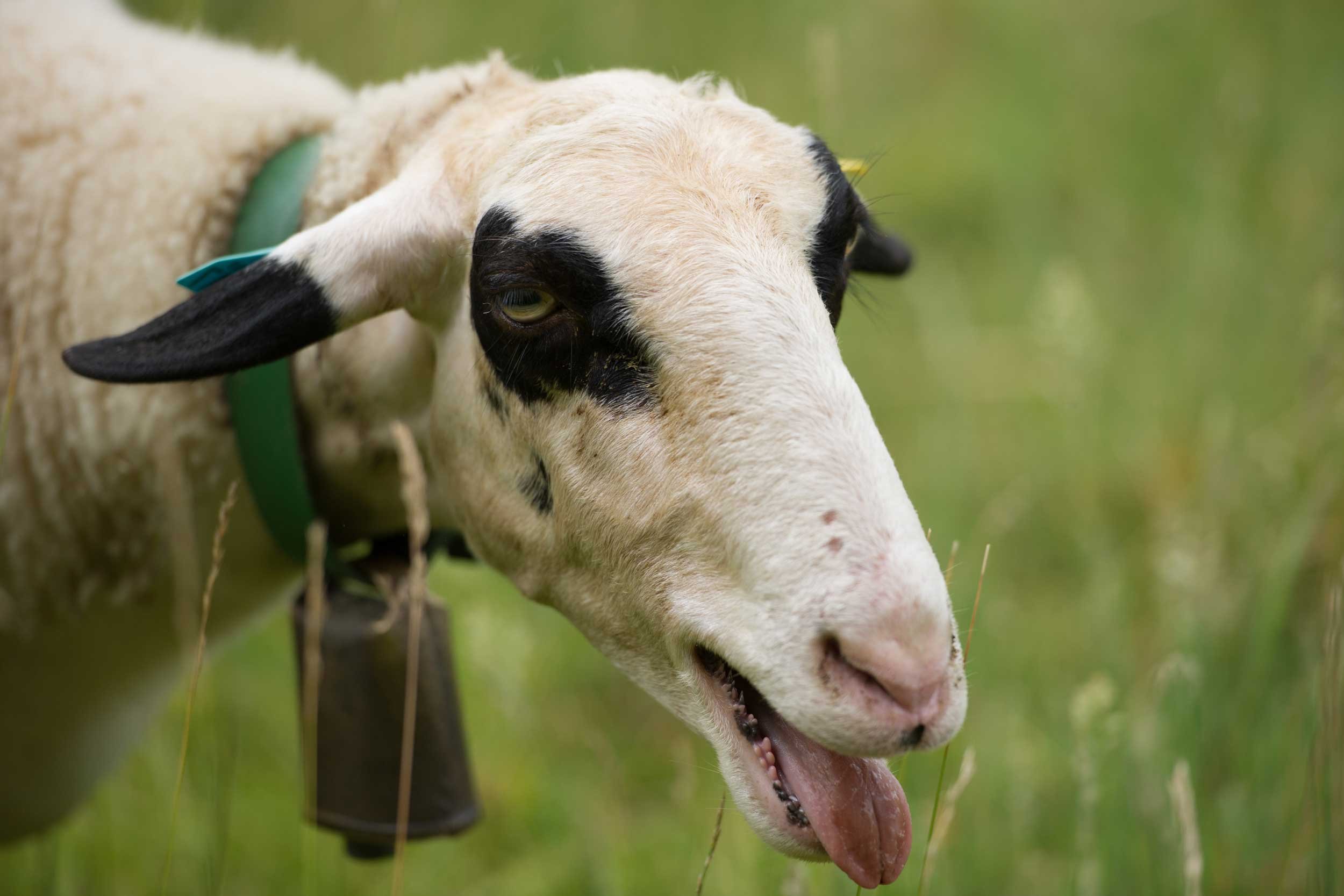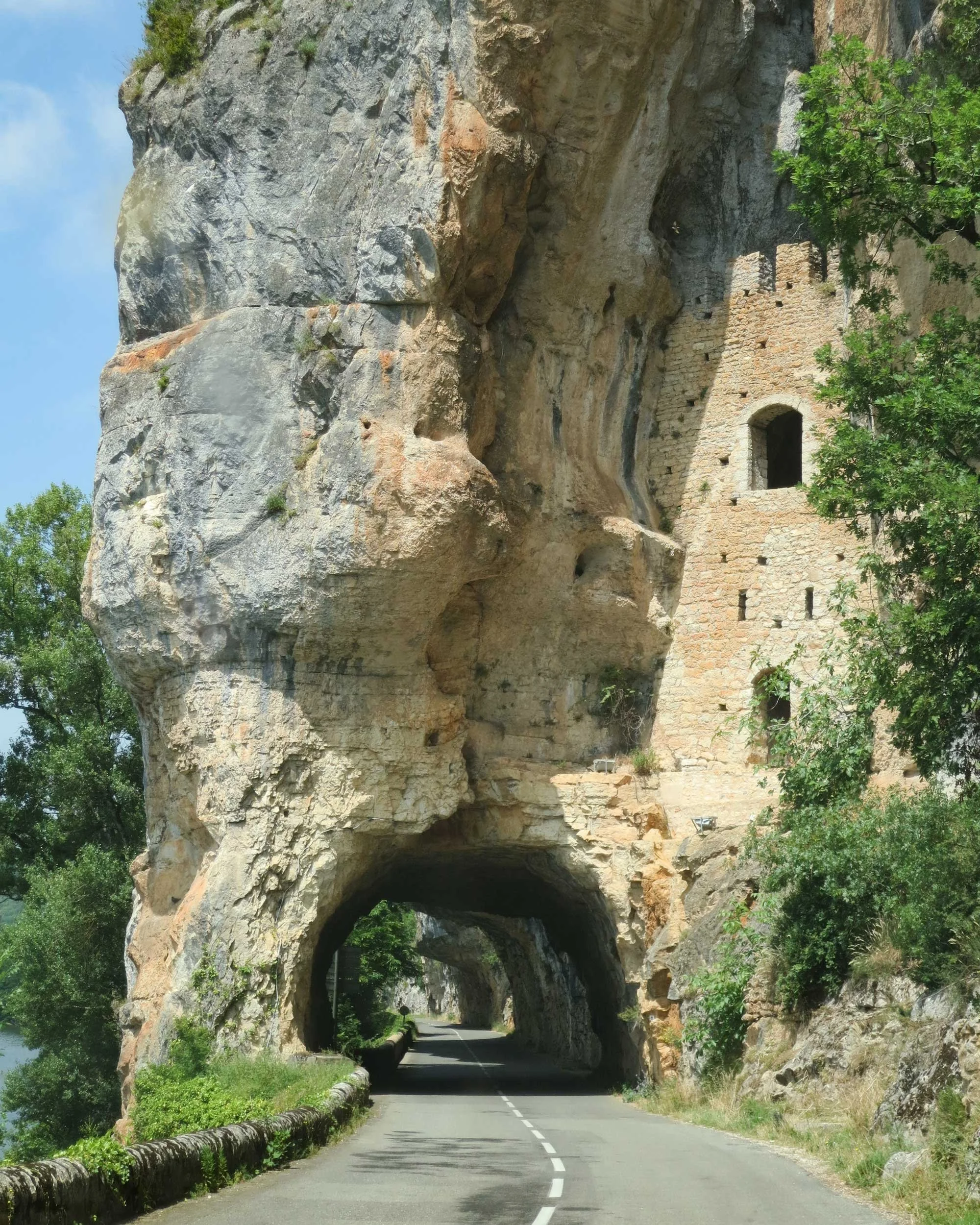A Sweet sojourn in Saint-Cirq-Lapopie
Saint-Cirq-Lapopie, is a picturesque village approximately 2 hours north of Toulouse and 30km to the east of Cahors. It sits on a cliff 150m above the Lot River.
View from Saint-Cirq-Lapopie to the Lot River
The village has only a small number of permanent residents but being a member of Les Plus Beaux villages de France, it attracts 500,000 visitors over the summer months. Most of these visitors come for the day but we enjoyed a short and sweet overnight sojourn.
Strolling the gardens at Hôtel-Spa Le Saint Cirq, with a view to the hilltop village of Saint-Cirq-Lapopie across the Lot River
Our accommodation was across the Lot River, at Hôtel-Spa Le Saint Cirq. On arrival we settled into our room before enjoying a drink on the terrace followed by a refreshing dip in the pool.
Glorious wildflower field in the hotel’s garden
The garden of the hotel is so lovely and perfect for a stroll to explore the rows of grapevines, a wildflower field and the purple haze of lavender lining the paths. My French Views logo is from this photo taken by Chris during our stay.
The photo that became French Views logo created by Chris Handel Photography.
There are designated parking areas above and below the village of Saint-Cirq but we avoided the daytime crowds and took the hotel’s complimentary mini shuttlebus across the bridge, arriving in the village for dinner at restaurant, Le Gourmet Quercynois.
Chris arriving at restaurant, Le Gourmet Quercynois and enjoying the ambiance of the terrace in the photos below.
Our meal was delicious and included the regional specialties of foie gras, terrine canard with a walnut salad and confit caisse canard (duck leg cooked in its own fat).
After dinner, a walk through the village.
Following dinner, we explored the narrow-cobbled pedestrian streets of the village. Most of the buildings are from the 12th, 13th and 14th centuries, and are now shops, restaurants, small hotels and B&Bs.
As you can see, the streets are narrow and steep
The Quercy region has many castles dating back to 100 years’ war when there were many lords of the land English and French, ownership went back and forth. It was an important area for ironworkers, tanning and other crafts, who used the river to transport their goods. Saint-Cirq-Lapopie was once a very prosperous village, as customs tax was collected by the lord for people using this part of the river.
A view of the village from the ruined fortress
Goods were shipped in boats but the arrival of the railway changed the use of the river, and the nearby towns of Cahors and Figeac became more important. Saint-Cirq was not really re-discovered until the early 20th century, when an artist’s colony helped bring it back to life but basically it survives as an authentic medieval village.
The lovely green countryside of the Lot River valley
Then, as the sun was setting, we climbed up to the ruined fortress, behind the tourism office, for breathtaking views of the village, river and surrounding countryside. At 10pm, the minibus came to pick up the hotel guests. What a fabulous service!
Rugged cliffs along the Lot River. Click here for a video from YouTube.
Enjoying the spectacular sunset from the ruined fortress
Back at the hotel we enjoyed another stroll through the garden before retreating to our beautiful room.
Our beautiful room at the hotel
View of the village of Saint-Cirq-Lapopie from our hotel
As we didn’t have far to drive the following day, after breakfast, we took our time to explore more of the hotel garden and met the donkey, Popie and the goats.
I suggest that you visit between May – September. By mid-October many of the shops in the village will be closed but some restaurants remain open all year on weekends. The nearby village of Bouziès , it’s much more accessible and you can walk alongside the river.
Crossing the Lot River on Pont de Bouzies
Pont de Bouzies
Château des Anglais de Bouzies (Castle of the English of Bouzies) perched above the road to Saint-Cirq-Lapopie
Nearby, in the village of Cabrerets, is the famous prehistoric cave, Pech Merle . Here you can see amazing paintings, like the Spotted Horses, which are over 29,000 years old. The caves were discovered in 1922 by three children from the village. We didn’t have time to visit as we had to move onto our next destination. However, having visited a prehistoric cave near Saint-Cyprien, I would recommend including a visit, as it’s one of the interesting attractions in this area. For more information about the Lot Valley, please take a look at this website: https://www.cahorsvalleedulot.com/
Until next time, when we travel to Paris. À bientôt!







